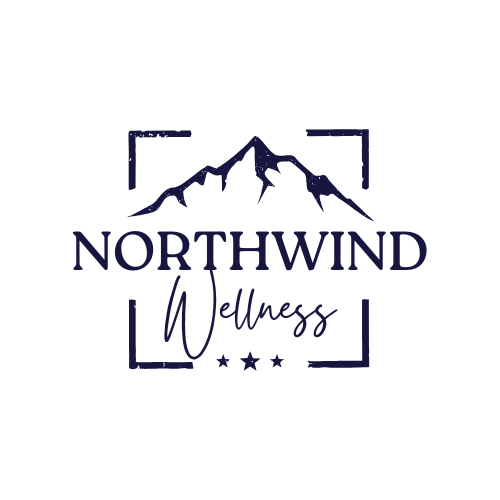
Across Montana’s vast landscapes, from Billings to Missoula, countless residents find themselves asking ‘similar question “Is this Addiction” about themselves or loved ones. Montana faces substance abuse rates higher than national averages, with approximately 10% of adults struggling with substance use disorders—a statistic that doesn’t capture the ripple effects on families and communities.
Identifying addiction can be challenging in our state, where rugged individualism runs deep, and the “Montana tough” mentality often discourages seeking help. Rural isolation, harsh winters, and limited access to resources create additional barriers unique to our region.
At Northwind Wellness, we’ve spent over fifteen years helping Montanans recognize, confront, and overcome addiction. This guide will help you identify addiction signs, understand when professional help is needed, and navigate Montana’s treatment resources.
Understanding Addiction in Montana’s Unique Context
Montana’s vast, rugged landscape shapes our way of life—and influences how addiction develops in our communities. With nearly 147,000 square miles and just over a million residents, Montana’s population density is among the lowest in the nation, creating unique challenges for those struggling with addiction.
Rural isolation isn’t just physical—it’s emotional too. When the nearest neighbor lives miles away, people often cope with stress or trauma without social supports. During our brutal winters, this isolation intensifies. We’ve seen many clients whose substance use escalated during winter months when outdoor activities diminish.
Montana’s addiction statistics tell a sobering story. Our state ranks in the top ten nationally for alcohol consumption per capita, with 21.8% of adults reporting binge drinking compared to the 17.4% national average. Methamphetamine use has surged in recent years, particularly in rural communities.
Cultural factors play a significant role. Many Montana communities have strong ties to industries with higher injury rates and subsequent prescription painkiller use. Our state’s drinking culture is deeply embedded in social life, featuring prominently in everything from rodeos to fishing trips.
Early Warning Signs of Addiction in Montana Residents
Physical Signs to Watch For
Physical changes often provide the first visible clues. Weight loss or gain may occur as eating habits change. Many Montana families first notice addiction when a loved one who previously enjoyed winter activities suddenly seems constantly fatigued.
Sleep disturbances represent another common sign—either sleeping excessively or developing insomnia. Someone who used to rise early for hunting might suddenly struggle to get out of bed before noon.
Withdrawal symptoms vary by substance but often include sweating, tremors, nausea, and irritability. For alcohol dependency, these symptoms can emerge within hours of the last drink—a particular danger during Montana winters when being stranded can trigger dangerous withdrawal.
Behavioral Changes That May Indicate Addiction
Behavioral shifts often provide clear warning signs. Social withdrawal becomes noteworthy in Montana’s already isolated communities. Someone who always attended local gatherings might start avoiding community events.
Work performance typically suffers as addiction progresses. In a state where many livelihoods depend on physical labor and clear judgment, declining reliability often signals substance problems.
Financial difficulties despite adequate income may indicate money being diverted to substances. Legal problems frequently accompany addiction progression, with Montana seeing increasing DUI rates, particularly in rural counties.
Changes in social circles often occur as addiction advances. Life-long friends may be replaced with new acquaintances who share the substance interest. In tight-knit Montana communities, these friendship changes rarely go unnoticed.
Psychological and Emotional Warning Signs
Mood swings and irritability typically increase as addiction takes hold. Family members often report “walking on eggshells” around the person, never knowing what might trigger an angry outburst.
Loss of interest in previously enjoyed Montana activities represents a telling sign in our recreation-oriented state. When someone who lived for fly fishing suddenly shows no interest, addiction may be a factor.
When Casual Use Becomes Dependency: The Progression of Addiction
Addiction rarely happens overnight. It develops along a spectrum from occasional use to misuse to dependency. Understanding this progression helps identify problems before they become severe.
Casual use becomes concerning when patterns change—drinking on weeknights instead of just weekends or needing increasing amounts to achieve the same effect.
Tolerance development represents a critical warning sign. A person who once felt buzzed after two beers might now drink six without appearing intoxicated.
The “Montana tough” mentality can significantly delay seeking help. Our state’s emphasis on self-reliance means many don’t seek treatment until addiction has caused serious consequences.
Ask yourself these questions if you’re concerned about substance use:
- Do you think about the substance throughout the day?
- Have you tried to cut down or stop but couldn’t?
- Do you need more of the substance than you used to?
- Do you use despite negative consequences to health or relationships?
Common Addictions in Montana Communities
Alcohol Addiction in Montana
Alcohol remains Montana’s most widely used addictive substance. Our state consistently ranks among the top five nationally for per capita alcohol consumption. Montana’s drinking culture runs deep, from microbreweries in every town to the expectation that outdoor adventures end with celebratory drinks.
Signs of alcohol dependency include morning drinking to steady nerves and inability to limit consumption once started. Physical indicators include facial redness and liver problems.
Prescription Drug and Opioid Addiction
While Montana hasn’t experienced opioid devastation at levels seen elsewhere, prescription drug misuse remains serious. Many cases begin with legitimate prescriptions for work injuries common in Montana’s physical industries.
Signs of prescription misuse include “doctor shopping” (visiting multiple providers for the same medication) and taking higher doses than prescribed. The pathway often follows a pattern: prescription opioids for legitimate pain, developing tolerance, and eventually turning to illicit sources.
Methamphetamine and Other Substance Concerns
Methamphetamine use has surged across Montana, with tribal communities and rural areas particularly affected. Law enforcement reports that meth now drives more crime than any other substance in the state.
Behavioral indicators include extreme energy followed by crashes, paranoia, and aggression. Physical signs include skin sores and dental problems. The impact on families can be devastating, with Child and Family Services reporting that meth-involved cases represent over 65% of out-of-home placements for Montana children.
Impact of Addiction on Montana Families and Communities
Addiction never affects just the individual—it ripples through entire family systems. Spouses often develop enabling behaviors, while children frequently show symptoms of trauma and anxiety, with higher risk for developing substance problems themselves.
The economic impact on Montana communities is substantial. In small towns where every working adult contributes significantly to the local economy, the impact of even a few individuals’ addictions can be profound.
Intergenerational patterns often emerge, with addiction passing from parents to children through both genetic predisposition and learned coping mechanisms. Breaking these cycles requires whole-family approaches to recovery.
Despite these challenges, recovery happens every day across Montana. Consider James from Lewistown, who struggled with alcohol addiction for fifteen years before seeking treatment. Today, five years sober, he leads a local support group helping others find recovery in his rural community.

When and How to Seek Help for Addiction in Montana
Recognizing When Professional Help is Needed
Critical warning signs that indicate immediate help is necessary include:
- Withdrawal symptoms that could be medically dangerous (seizures, hallucinations)
- Suicidal thoughts or behaviors
- Medical complications related to substance use
- Inability to control use despite sincere efforts
Montana-specific barriers to treatment include physical distance (some residents live 200+ miles from the nearest treatment center), winter weather that makes travel dangerous, and stigma particularly powerful in small communities.
Intervention Approaches for Montana Families
Approaching a loved one about addiction requires careful planning. Choose a private moment, speak from personal experience using “I” statements, avoid accusations, and express specific concerns about observed behaviors.
Professional intervention resources exist throughout Montana, including trained interventionists who understand our state’s unique cultural context and can help navigate resistant attitudes toward treatment.
Assessment and Treatment Options
Montana offers various levels of care for addiction treatment:
- Detoxification services provide medically supervised withdrawal management
- Inpatient/residential treatment offers intensive programming away from home
- Intensive outpatient programming offers several treatment hours weekly
- Outpatient counseling provides ongoing support during recovery
Montana’s Medicaid expansion has increased treatment access for many previously uninsured residents. The assessment process typically includes medical evaluation, psychological assessment, and determination of appropriate level of care.
Montana’s Addiction Treatment Resources
Northwind Wellness Programs and Approach
At Northwind Wellness, we’ve developed treatment approaches specifically for Montana’s unique population, including:
- Trauma-informed care recognizing high rates of adverse childhood experiences
- Outdoor therapy connecting recovery to Montana’s natural environment
- Family therapy addressing intergenerational patterns
- Telehealth options for those in remote areas
Over 65% of our clients maintain sobriety at one-year follow-up, with significant improvements in employment, family relationships, and overall well-being.
Support Groups and Community Resources
Twelve-step groups like Alcoholics Anonymous and Narcotics Anonymous meet in communities across Montana. Alternative support groups like SMART Recovery have established presences in larger Montana cities.
Crisis resources available 24/7 include:
- Montana Suicide Prevention Lifeline: 988
- Montana Chemical Dependency Center: (406) 496-5400
- Montana 211 (for referrals to local resources)
FAQ: Common Questions About Addiction in Montana
How do I know if someone in Montana has an addiction? Look for consistent patterns rather than isolated incidents. Key warning signs include increasing tolerance, withdrawal symptoms, unsuccessful attempts to control use, neglecting responsibilities, and continuing use despite negative consequences. In Montana specifically, watch for withdrawal from community events and increased isolation, particularly during winter months.
What are the early signs of addiction in Montana residents? Early warning signs include changes in sleep patterns, unexplained financial problems, mood swings, and secretive behavior. Montana residents might show decreased participation in community events or sudden disinterest in seasonal activities they previously enjoyed.
When is it time to get help for substance abuse in Montana? It’s time when substance use causes problems in major life areas but continues anyway, when attempts to cut down have failed, or when stopping causes physical or psychological distress. Don’t wait for “rock bottom”—earlier intervention generally leads to better outcomes.
What addiction warning signs should not be ignored in Montana? Never ignore potentially dangerous withdrawal symptoms, suicidal thoughts, medical complications from substance use, or neglect of dependent family members. In Montana’s rural areas where emergency services may be distant, these warning signs become even more critical.
What does addiction look like in Montana? Addiction in Montana often hides behind cultural norms around drinking and self-reliance. It might look like the rancher who can’t get through calving season without a case of beer each night or the construction worker using methamphetamine to work longer hours.
Where can I find help for addiction problems in Montana? Resources include Northwind Wellness, the Montana Chemical Dependency Center, community mental health centers, primary care providers, tribal health services, and peer support groups like AA/NA. Montana 211 provides comprehensive referrals to local resources.
How do I know if I have an addiction? Ask yourself: Do you use more than intended? Have you tried unsuccessfully to cut down? Do you spend significant time obtaining, using, or recovering from the substance? Has use interfered with fulfilling major responsibilities? Have you given up important activities because of use?
Understanding the symptoms of drug addiction in Montana Drug addiction symptoms generally include physical signs (weight changes, sleep disturbances), behavioral changes (secretiveness, financial problems), and psychological symptoms (mood swings, anxiety, depression). Montana’s isolation can make these symptoms particularly dangerous.
Montana resources for addiction signs and symptoms Resources include Montana DPHHS’s Addictive and Mental Disorders Division website, community health centers, tribal health services, and Montana State University’s Center for Mental Health Research and Recovery.
Seeking help for addiction in Montana Taking the first step can include calling Montana 211 for local resources, speaking with your primary care provider, contacting Northwind Wellness for an assessment, or attending an open AA/NA meeting. Remember that seeking help represents strength, not weakness.
Conclusion
While Montana’s rugged geography and independent culture create unique challenges for addressing addiction, they also foster remarkable strengths. The same resilience that helps Montanans endure harsh winters and vast distances becomes a powerful asset in recovery. Our community’s spirit of neighbor helping neighbor provides a foundation for healing that’s uniquely Montana.
At Northwind Wellness, we’ve had the privilege of walking alongside countless Montanans as they reclaim their lives from addiction. We’ve seen ranchers, teachers, healthcare workers, and construction crews transform their struggles into strength—rebuilding connections with family, rediscovering the joy in Montana’s breathtaking landscapes, and creating meaningful lives in recovery.
If you recognize warning signs in yourself or someone you care about, remember that uncertainty only prolongs suffering. Our compassionate team at Northwind Wellness understands Montana’s unique addiction challenges because we live them too. We’re just a phone call away, ready to answer your questions confidentially, provide a free initial assessment, or simply listen without judgment.
Recovery isn’t just about stopping substance use—it’s about rediscovering who you are without addiction. It’s about waking up to Montana’s stunning sunrises with clarity and purpose. The journey begins with a single step, and you don’t have to take it alone. Reach out today, because every Montanan deserves the chance to heal.
